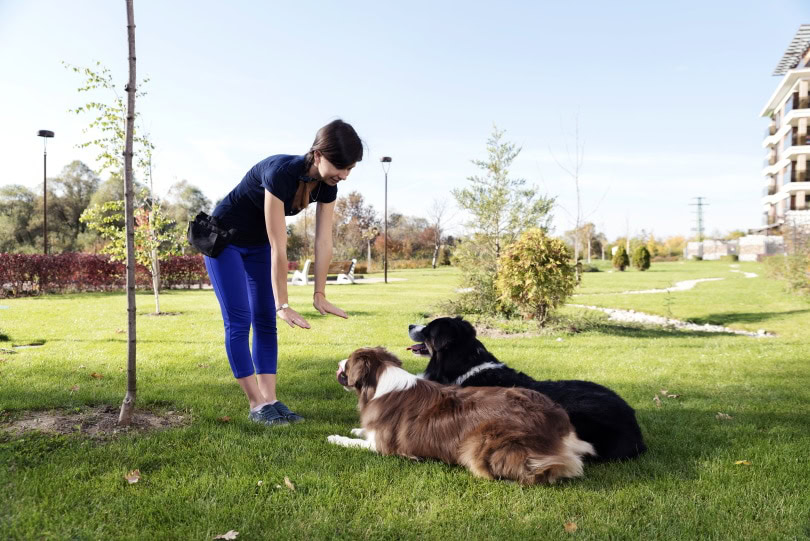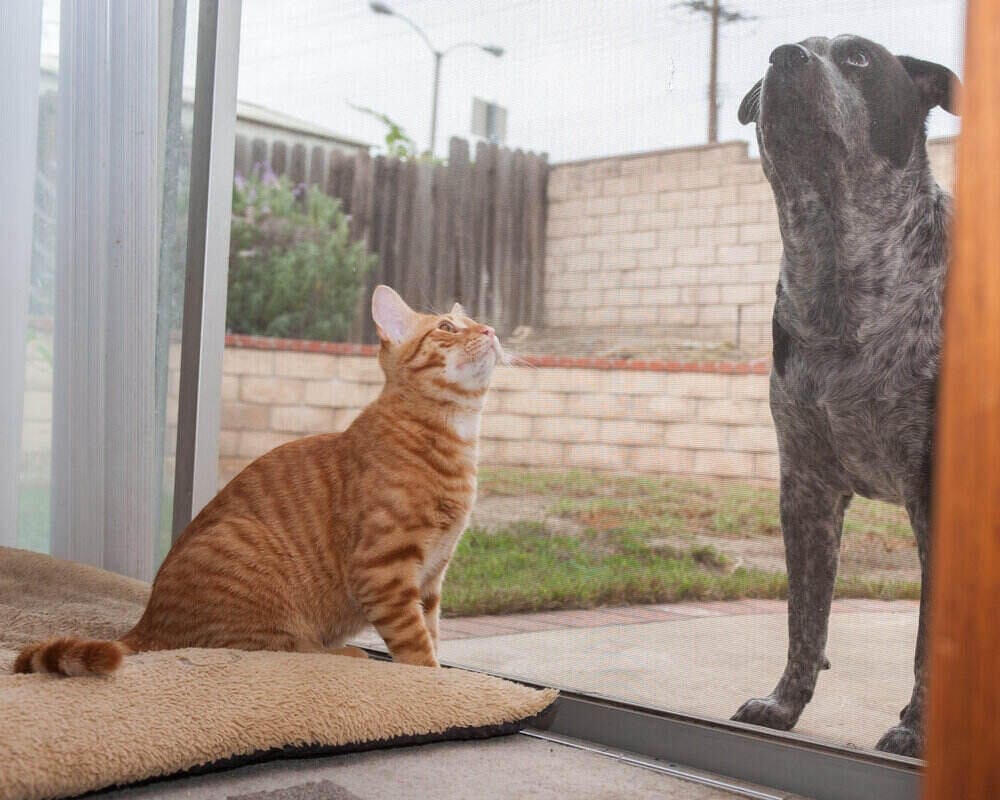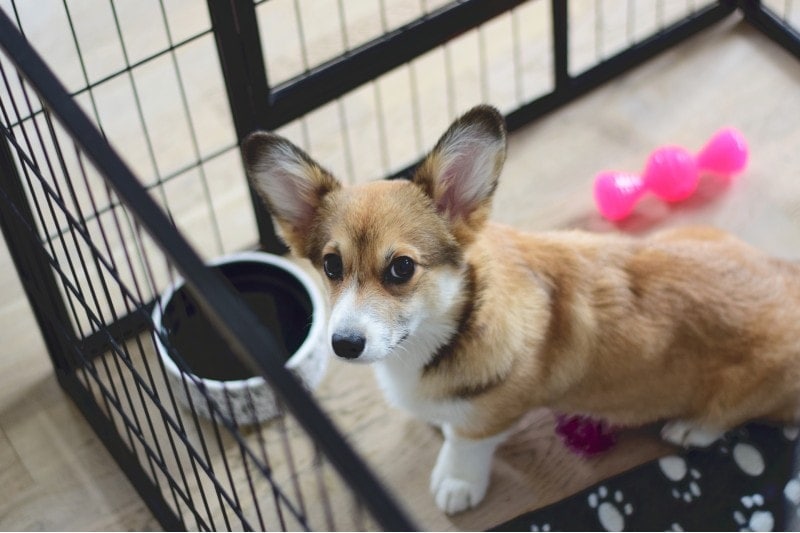VET APPROVED

The information is current and up-to-date in accordance with the latest veterinarian research.
Learn more »It’s important that your dog knows how to stay in place when told. Not only will learning how to stay teach your dog obedience and discipline, but it will also help him learn to control his impulses to keep him safe. For example, if your dog were to slip out of his collar while out walking, knowing how to stay in place could save his life as it could prevent him from getting into traffic.
The key to teaching your dog how to stay is patience, timing and persistence. Below are the steps involved with teaching a dog to stay.

The 6 Tips to Teach a Dog to Stay
1. Choose a Quiet Location

To begin the training, pick a spot that’s familiar to your dog like your backyard. This way, he’ll stay focused and won’t be tempted to explore the surroundings. You should also be sure that your dog is calm during the training. If you have a highly energetic dog, play with him before the training or take him for a nice long walk.
2. Use Your Hands and Voice
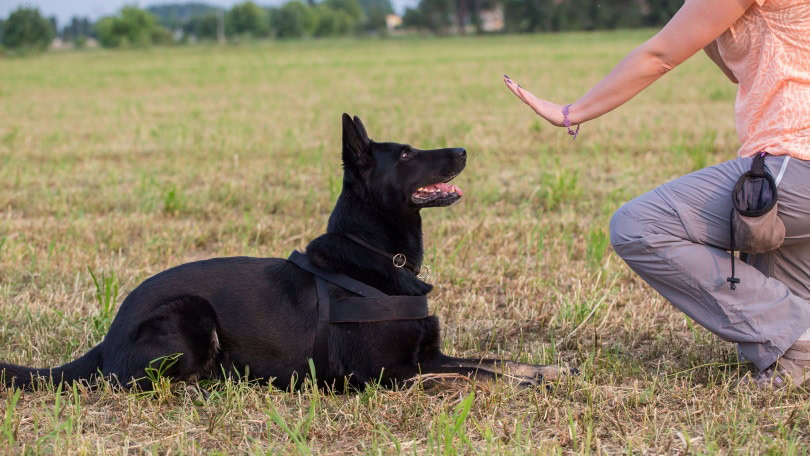
To begin the training, tell your dog to sit then extend your hand and say the word “stay” in an upbeat, positive tone. This will send the message to your dog to remain in place. Repeat this numerous times before moving or saying anything more so your dog learns the association between the stay command with the action of extending your hand.
3. Take One Step Backward
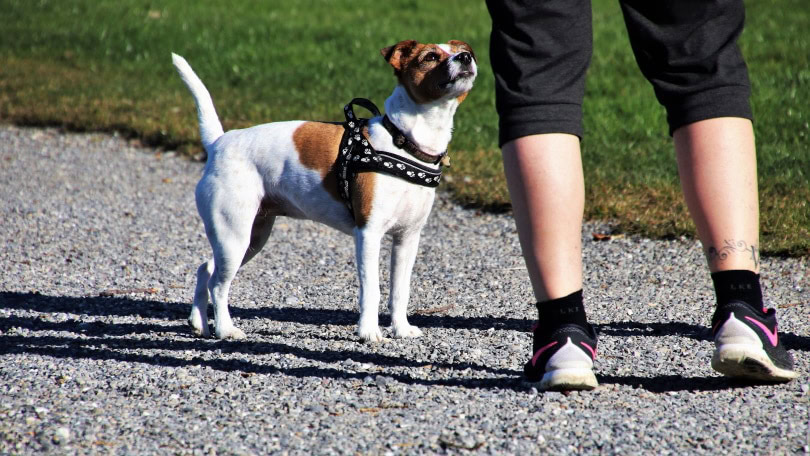
Once your dog has learned to sit and stay in place while you’re standing in front of him, take a step backward to see if he remains in the stay position.
The main idea here is for your dog to understand he shouldn’t stand up and follow you, which will happen if you move too far. If this happens, simply put your dog back in position without rewarding him. If you move away from your dog now and he stays, give him verbal praise or a small treat to enjoy while staying in place. At this point, try to gradually increase to two, then three or four steps back, then start working towards gaining seconds.
4. Establish a Release Command
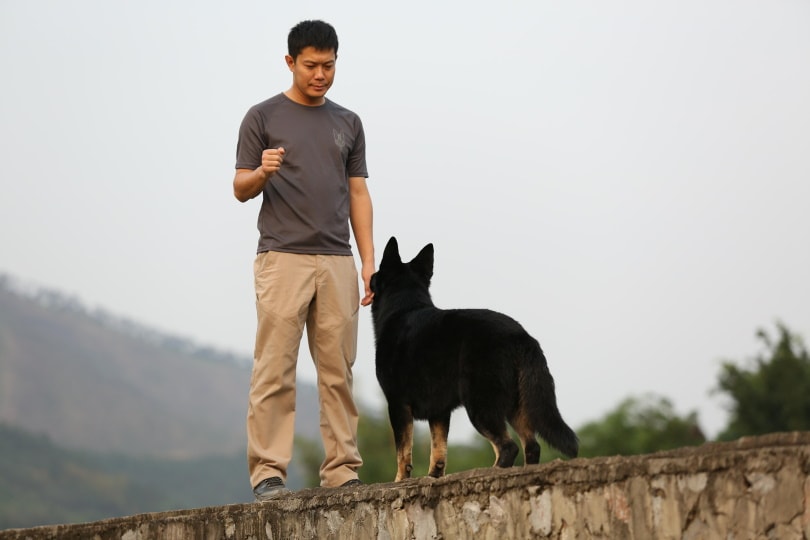
When your dog has learned to stay for 10 to 15 seconds, establish a release word like OK and drop your hand, and say “come” to let your dog know he should come to you. Use a monotone voice when giving your dog the OK command so he doesn’t think he will get a treat just for coming to you.
5. Add Time to The Training

Once your dog understands how to stay for a few seconds while you’re standing close by, it’s time to add time to the training. This can vary considerably between one dog and the next. You may only be able to increase the time by a second or two each training round or by as much as 30 seconds. You know your dog best and his general attention span so factor that in for this step of the training.
Keep track of how much time you’re building up each time you practice. If your dog isn’t staying in place, you should go back, decrease the time then work your way back up.
A good rule of thumb to follow is to have your dog stay five times in a row before increasing the time. The end goal of this step of the training is for your dog to learn to stay in place for one to two minutes while you’re standing near your dog.
6. Add Distance to the Training
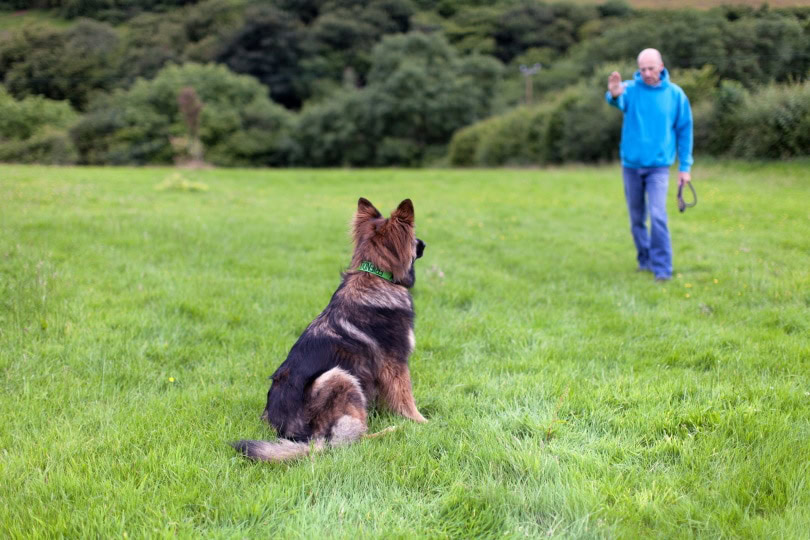
Once your dog has learned to stay in place for a good minute or two while you’re standing close to him, it’s time to put some distance between the two of you.
Every time you command your dog to stay, take a step back and then return to him and give him verbal praise or treat reward. Continue doing this while increasing the number of steps you take back.
Your dog may find it increasingly difficult to stay the further back you go. If this is the case, simply reduce the amount of time you ask your dog to stay and then build back up again.
If you need guidance on training your dog, we suggest you speak to a vet or a professional dog trainer.

Final Thoughts
Once your dog learns to stay in the quiet area you’ve chosen for the training, practice in different locations so he learns that the command can be given anywhere. Keep up with the training so your dog doesn’t forget how to stay.
While it takes time and patience to teach your dog to stay, it’s important training that will keep your dog safe. Remember that your dog wants to please you and is eager to learn new things like most dogs are. Use kindness and patience at all times and reward your four-legged friend with lots of praise and of course, a yummy treat here and there when he’s being obedient!
- You might want to check out: How to Train Your Dog with Love + Science Book Review: Canine Coaching Made Positively Simple
Featured Image Credit: Paya Mona, Shutterstock
